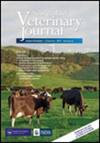对生命的呼唤:在兽医职业中创造福祉和建立复原力
IF 1.1
4区 农林科学
Q3 VETERINARY SCIENCES
引用次数: 0
摘要
Sonja Olson博士是《生命的呼唤》一书的作者,旨在带领读者踏上一段全面但有点直面的旅程,拥抱同情和幽默,探索兽医专业人员面临的挑战和担忧。幸福感的重要性及其重要性凸显出来,奥尔森清楚地解释了心理健康不佳的心理影响和身体后果。她接着探讨了解决这些问题的可能方案,并对该行业的未来做出了鼓舞人心、积极的评价。奥尔森是一位经验丰富的动物急救临床医生。她花了25年的时间从事临床医生、教师、导师和领导者的工作,但她认识到兽医行业缺乏健康意识和技能。这种意识激发了她支持兽医茁壮成长的热情,她专注于兽医团队健康和福祉培训师的新角色。在这本书中,奥尔森谈到了该行业面临的挑战,并寻求一些答案。她丰富的临床兽医经验,加上对心理健康和幸福感的深入了解,使她能够就兽医专业人员的幸福感和复原力话题发表权威性的演讲。在整本书中,奥尔森充分利用了她在兽医行业的人脉,并将他们的声音带到了生活中。这本书与循证参考文献和有趣的插图交织在一起,再加上她自己引人注目的个人叙述,对护理行业过去和现在的职业危害进行了广泛的概述。该阶段设置在第1章中,从历史的角度看待兽医行业的复杂文化,以及人与动物之间的关系是如何随着时间的推移而演变的。奥尔森深入兽医实践的不同领域,强调他们面临的问题。整本书中的许多例子都集中在伴侣动物兽医的观点上,但如果能更多地强调马和生产动物的实践,那就太好了。第2章对一些常用术语进行了有用的澄清和定义,如压力、压力、移情痛苦、同情疲劳、道德压力、道德冲突和倦怠,这些术语在整本书中都有提及,并使围绕心理健康、心理健康不佳和心理疾病的对话正常化。第3章极好地概述了富有同情心的护理人员所面临的问题,涵盖了各种潜在的压力源,包括技术和社交媒体的影响、下班后的工作、繁重的工作量、工作与生活的平衡以及围绕财务问题的道德、伦理和情感问题。考察了兽医职业生涯的不同阶段,强调了兽医教育的重要性、工作场所文化对个人在实践中茁壮成长能力的影响,以及兽医职业身份的演变。奥尔森指出了兽医可能会从临床工作的固有挑战中寻求解脱的一些更具挑战性的方式,并谈到了自杀意念和自杀这一难题。本节的结尾是一份非常实用的资源和组织清单,这些资源和组织在危机中为个别兽医专业人员提供帮助和支持。尽管在前三章中涵盖了临床兽医职业对心理健康的广泛负面影响,但本书在后三章中出现了更积极的转变。奥尔森乐观、专注于解决方案的方法设计了一个个人工具箱,旨在培养兽医专业人员的自我护理和应变能力,这可能对一些读者有用。这本书最后聚焦了国际兽医界在兽医福利领域解决问题的一些不同方式。这本书充满了循证信息、参考资料、资源、自助技巧和现实生活中的经历。它与兽医、兽医学生和相关兽医专业人员有关,他们对兽医人员的心理健康和福祉以及职业的未来感兴趣。总的来说,读者将提高对兽医职业心理健康问题的全球性质的认识,以及制定一个框架以促进兽医社区繁荣所需的知识。本文章由计算机程序翻译,如有差异,请以英文原文为准。
A call to life: creating wellbeing and building resilience in the veterinary profession
Dr Sonja Olson, author of A Call to Life, aims to take the reader on a comprehensive but somewhat confronting journey, embracing compassion and humour, to explore the challenges and concerns veterinary professionals face. The importance of wellbeing and why it matters is brought to the fore and Olson clearly explains the psychological impacts and physical consequences of poor mental health. She goes on to look at possible solutions to the problems and ends on an inspiring, positive note for the future of the profession. Olson is an experienced companion animal emergency clinician. She spent 25 years in practice working as clinician, teacher, mentor, and leader but recognised there was a paucity of wellbeing awareness and skills in the veterinary profession. This awareness drove her passion to support veterinarians to thrive by focusing on her new role as a health and wellbeing trainer of veterinary teams. In this book, Olson addresses the challenges facing the profession and looks for some answers. Her extensive clinical veterinary experience, alongside a deep knowledge of mental health and wellbeing, enable her to speak with authority on the topic of wellbeing and resilience in veterinary professionals. Throughout the book, Olson leverages her connections in the veterinary profession and brings their voices to life. The book is interwoven with evidence-based referenced literature and entertaining illustrations, together with her own compelling personal narrative which gives a broad overview of the past and current occupational hazards of being in a caregiving profession. The stage is set in Chapter 1 with a historical perspective of the complex culture in the veterinary profession and how the human-animal bond has evolved over time. Olson dips into the different fields of veterinary practice to highlight the issues they face. Many of the examples throughout the book focus on the views of companion animal veterinarians, however it would have been good to have a greater emphasis on equine and production animal practice. Chapter 2 provides useful clarification and definition of some commonly used terms such as stress, eustress, empathetic distress, compassion fatigue, moral stress, ethical conflict and burnout, which are referred to throughout the book and normalise the conversation around mental health, poor mental health, and mental illness. Chapter 3 provides an excellent overview of the issues that those in a compassionate caregiving profession face and covers a wide variety of potential stressors including the impact of technology and social media, after-hours duties, heavy workloads, work-life balance and the moral, ethical and emotional issues surrounding financial concerns. Different stages of a veterinarian’s career are examined, highlighting the importance of veterinary education, the impact of workplace culture on an individual’s ability to thrive in practice, and the evolution of a veterinarian’s professional identity. Olson identifies some of the more confronting ways veterinarians may seek relief from the inherent challenges of clinical work and touches on the difficult topic of suicidal ideation and suicide. This section is carefully concluded with a very practical list of resources and organisations that offer help and support to individual veterinary professionals in a crisis. Despite covering a wide range of negative impacts of a clinical veterinary career on psychological health in the first three chapters, the book takes a more positive turn in the last three chapters. Olson’s optimistic, solutionfocused approach in designing a personal toolbox aimed at developing self-care and resilience for veterinary professionals might be useful for some readers. The book concludes by shining a spotlight on some of the diverse ways the international veterinary community has taken to problem solving in the veterinary wellbeing space. This book is packed with evidence-based information, references, resources, self-help tips and real-life experiences. It is relevant to veterinarians, veterinary students and allied veterinary professionals who have an interest in the mental health and wellbeing of veterinary personnel as well as the future of the profession. Overall, readers will gain an increased level of awareness of the global nature of mental health concerns in the veterinary profession and what is needed to develop a framework to promote a thriving veterinary community.
求助全文
通过发布文献求助,成功后即可免费获取论文全文。
去求助
来源期刊

New Zealand veterinary journal
农林科学-兽医学
CiteScore
3.00
自引率
0.00%
发文量
37
审稿时长
12-24 weeks
期刊介绍:
The New Zealand Veterinary Journal (NZVJ) is an international journal publishing high quality peer-reviewed articles covering all aspects of veterinary science, including clinical practice, animal welfare and animal health.
The NZVJ publishes original research findings, clinical communications (including novel case reports and case series), rapid communications, correspondence and review articles, originating from New Zealand and internationally.
Topics should be relevant to, but not limited to, New Zealand veterinary and animal science communities, and include the disciplines of infectious disease, medicine, surgery and the health, management and welfare of production and companion animals, horses and New Zealand wildlife.
All submissions are expected to meet the highest ethical and welfare standards, as detailed in the Journal’s instructions for authors.
 求助内容:
求助内容: 应助结果提醒方式:
应助结果提醒方式:


